ERC Consolidator Grants for Laserlab Researchers
ERC Advanced Grants for Laserlab researchers >>>
ERC Starting Grants for Laserlab researchers >>>
ERC Synergy Grants for Laserlab researchers >>>
2023
|
Thomas Bocklitz (Leibnitz-IPHT): Non-invasive computational immunohistochemical staining based on deep learning and multimodal imaging In order to distinguish between healthy and diseased tis- sue in tumour diagnostics, conventional methods involve staining tissue samples and then having them examined by pathologists. These steps are labour-intensive and require a great amount of time and money. Researchers in the ERC Consolidator Grant project STAIN-IT want to develop a faster and gentler procedure. In the transdisciplinary project, Thomas Bocklitz, head of the research department “Photonic Data Science” at the Leibniz IPHT, and his team are researching and developing a digital staining method. Their goal is to use multimodal imaging techniques in a non-invasive way. To do this, image data is analysed using artificial intelligence to mimic immunohistochemical staining. |

|

|
Ioachim Pupeza (Leibniz-IPHT):Laser-based infrared vibrational electric-field fingerprinting The major goal of the ERC Consolidator Grant project LIVE (Laser-based infrared vibrational electric-field fingerprinting), led by Ioachim Pupeza, is to research and develop novel light sources as well as innovative IR technologies and instruments and to open up application potentials for the diagnostic analysis of biomedical samples. The process is expected to significantly increase both the throughput rate of procedures and shorten the time required for a single analysis, which is an important factor for the clinical setting. |
|
Costanza Toninelli (LENS): Quantum interfaces with single molecules Costanza Toninelli has received an ERC Consolidator Grant for her project “Quantum interfaces with single molecules” (QUINTESSEnCE) project. The challenge is to exploit quantum effects in systems of increasing complexity such as molecules in the solid state, with the possibility of miniaturisation and portability typical of integrated photonic devices. QUINTESSEnCE takes up the challenge, combining the extreme flexibility of molecular chemistry, which allows the creation of molecules with customised energy states, with the most advanced nano- photonic techniques. |

|
2022
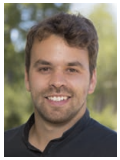 |
Frederico Fiúza (IST): Extreme particle acceleration in shocks: from the laboratory to astrophysics Astrophysical shocks, generated by violent interactions of supersonic plasmas, are among the most powerful particle accelerators in the Universe. The underlying physics of particle acceleration in astrophysical shocks is not yet well understood, nor fully explored in the laboratory. |
2021
|
Leticia Tarruell (ICFO): Unconventional superfluids in quantum gases with competing interactions Leticia Tarruell aims to exploit the full potential of ultracold quantum gases with competing interactions, unlocking the observation of unconventional superfluid phases. To this end, the project will explore three distinct mechanisms resulting in unconventional superfluid behaviour: quantum fluctuations, engineered dispersion relations, and interactions with non-zero orbital angular momentum. Exploiting various combinations of bosonic and fermionic potassium atoms will allow the realisation of novel types of ultradilute quantum liquids, supersolid-like gases and liquids, density- dependent artificial gauge fields, and elastic multi-body interactions. The project will also investigate a new approach towards the long-sought px+ipy topological superfluid phase of 2D Fermi gases. These experiments will deepen our understanding of the mechanisms behind unconventional super- fluidity, serving the whole range of disciplines where unconventional superfluids or superconductors play a key role. |
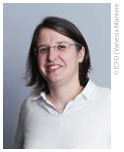 |
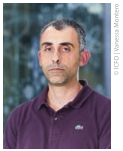 |
Gerasimos Konstantatos (ICFO): Mid- and long-wave infrared colloidal quantum dot optoelectronics Gerasimos Konstantatos will address the high cost and fragmented solutions limiting the potential and wide-spread use of mid-to-long wave IR optoelectronic materials. In order to overcome the fundamental constraints arising from the band-gap of available materials, the team will develop colloidal quantum dot (CQD) technology using intra-band (rather than interband) transitions. This will require addressing several fundamental challenges, including developing robust heavy doping schemes and the exploration and control of intraband relaxation pathways. The advances made in this project will lead to a new disruptive technology for the MWIR/LWIR, as well as providing additional options for other fields that utilise hot carriers, such as catalysis and energy harvesting. |
|
Jochen Mikosch (MBI): Chemistry in motion – Lasers challenge the start-time dilemma Jochen Mikosch aims to answer fundamental questions about the structural dynamics of chemical reactions. Efforts to examine the transition states which occur over the course of a chemical reaction have long been hampered by the so-called “start-time dilemma.” Usually, reactants are randomly distrib- uted and oriented in space, and even with an ultra-short laser pulse there is no external control over the precise moment when a reaction takes place. This project addresses these issues by holding the reaction partners closely together in a well-defined initial configuration. The reaction can then be initiated with a femtosecond laser pulse, and by tuning its wavelength the reaction rate can be adjusted. The three-dimensional structure of the transition state is then imaged with a method called Coulomb explosion imaging. |
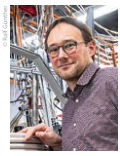 |
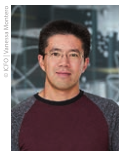 |
Darrick Chang (ICFO): A new spin on quantum atom-light interactions Darrick Chang aims to demonstrate the enormous and under-exploited potential of interference in light emission for quantum applications. The project aims to establish protocols with exponentially better error bounds than those currently known. The main body of work will be the development of a quantum many-body theory of multiple scattering involving photons and atoms, taking advantage of state-of-the-art tools from condensed matter physics. Beyond robust new routes toward applications, this theory will also reveal exotic new quantum phenomena and lead to new insights into fundamental questions in optics, such as the physical limits of a material’s refractive index. Darrick Chang’s team anticipate a great advance in the understanding of light-atom interactions and their realm of potential applications |
2019
|
Stefan Witte (LLAMS): Seeing the invisible: Light-based 3D imaging of opaque nanostructures |
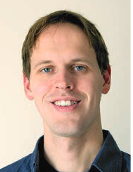 |
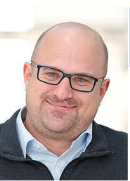 © Jan Greune (MPQ) |
Norbert Schuch (MPQ): Symmetries and Entanglement in Quantum Matter Symmetries are at the heart of quantum many-body phenomena in quantum chemistry, condensed matter, and high energy phys-ics. The discovery of new and unconventional phases, such as the fractional quantum Hall effect, has challenged this view because these phases display a global ordering in their entanglement rather than a local symmetry, which hinders their characterization.This new ERC Consolidator Grant will allow Nor-bert Schuch and his team to develop a comprehensive, symmetry-centred framework for the study of quantum many-body systems across physics based on the structure of their entanglement. It is at the interface between Quantum Information and Quantum Many-Body Physics. He has previously been awarded an ERC Starting Grant in 2014. Using Tensor Networks, it is possible to “transform” the model between physical space, with its local symmetries, and entanglement space, which gives rise to larger-scale ordering. By mapping back and forth, it is possible to study the ways in which the entanglement order manifests physically, and obtain a spectrum of powerful analytical, numerical, and experimental probes for unconventional phases. This framework can then be applied to a wide range of systems which appear in condensed matter and high energy physics, and the results of the project will give a unified understanding of unconventional phases, based on physical symmetries and the resulting entanglement order. This understanding will in turn provide numerical probes for their detection and simple ways to realise and probe these models in experimental scenarios, thereby significantly ad-vancing our ability to understand, study, and realize complex quantum phases. |
2018
|
Francesco Scotognella (POLIMI): Harvesting more solar energy Earth is inhabited by an energy-hungry human society. The Sun, with a global radiation at ground level of more than 1 kW/m 2 , is our largest source of energy. However, 45% of the total radiation is in the near infrared (NIR) and is not absorbed by most photovoltaic materials. In his Consolidator Grant project, Francesco Scotognella will try to increase the capacity of solar energy conversion by extracting plasmon-assisted hot carriers from NIR plasmonic materials. He intends to enhance the lifetime of these hot carriers by linewidth narrowing in plasmonic nanoparticle films made of doped semiconductor nanocrystals. The aim is to produce a solar cell device functioning in the near infrared with efficiencies up to 10%. A tandem solar cell, which would combine a commercial silicon solar cell with a power conversion of around 20% with the new PAIDEIA based device, is expected to reach a total power conversion efficiency of 30% by extending the range of utilised wavelengths to the full spectral range delivered by the Sun. |
2017
©University of Dundee |
Tomáš Čižmár (IPHT): Holographic micro-endoscopy |
| Nicola Poli (LENS): Gravitational effects on quantum systems After 100 years of general relativity and quantum mechanics, both theories have been tested at an unprecedented level. Unfortunately, though, we lack full comprehension at the fundamental level: a quantum description of space-time is still under discussion. High-precision experiments capable of measuring tiny gravitational effects on quantum systems, such as new generation atomic clocks and quantum inertial sensors, might be used to observe effects originating from Planck-scale physics. The main aim of Nicola Poli’s Consolidator Grant project is therefore to explore the limits of contemporary physics with a new generation of atomic quantum sensors, namely optical atomic clocks and atomic gravimeters. He will perform ultimate precision tests of gravity with fountains of ultra-cold cadmium and strontium atoms. Specifically, he aims to perform tests of the weak equivalence principle with quantum probes, exploring also possible spin-gravity couplings. Furthermore, he will address quantum interference of high-pre- cision clocks in a gravitational potential and will try to demonstrate gravity-induced decoherence mechanisms, opening the way towards an explanation of the quantum-to-classical transition in macroscopically entangled quantum systems. |
©LENS |
2016
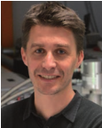 |
David Grojo (LP3): Extreme light for micro-fabrication |
| Frank Koppens (ICFO): Topological nano-photonics Topological nano-photonics is a new paradigm for novel quantum materials and will enable future applications in miniaturised photonic isolators, diodes and logic circuits, possibly leading to completely new concepts for communication systems, optical transistors and optical information processing. In his Consolidator Grant project TOPONANOP, Frank Koppens aims to exploit the extraordinary topological properties of novel quantum materials in order to control light at the nanoscale in a radically new way. One of the main objectives is to generate nonreciprocal nanoscale optical fields (plasmons) that propagate in only one direction and implement topologically protected plasmons such that they move around defects and corners. At the same time, visualizing and controlling electromagnetic excitations will be used as a tool to unravel extraordinary phenomena in exotic quantum materials. |
 ©ICFO |
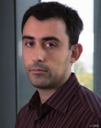 ©ICFO |
Gerasimos Konstantatos (ICFO): Green nanocrystal solar cells Solar cells made of nanocrystals have the potential to combine the best features of plastic solar cells and conventional silicon- based cells. Like plastic solar cells, they can be created from solution using a cheap and flexible technique called spin-coating. In addition, with nanocrystals much higher efficiencies could be reached in principle than with either plastics or silicon. Gerasimos Konstantatos’ Consolidator Grant project HEINSOL aims to develop the first highly efficient, robust solution processed solar cell platform based on environmentally friendly, Earth-abundant materials. To achieve this, HEINSOL undertakes a hierarchical approach to tailor the opto-electronic properties of inorganic nanocrystals, starting from the control of composition and their properties at the atomic level, and following up with further tailoring their optoelectronic properties via interactions at the supra-nanocrystalline level. |
2015
 |
Chiral molecules come in two forms, so-called enantiomers, which have essentially the same physical and chemical properties, but act differently in a biological setting. Both enantiomers can taste differently, for example, or have contrasting healing powers. Unravelling the workings of chirality would therefore be especially relevant for medicine development, and might even shed light on the origin of life. Because chi- ral molecules are sensitive to the handedness of light, ultra- short rotating (circularly polarised) laser pulses of attosec - ond duration can be used to unravel the dynamical aspects of chirality. With his Consolidator Grant, Yann Mairesse will build on a femtosecond technique recently developed at CELIA to create circular attosecond laser radiation, aiming to perform chirality-sensitive attosecond spectroscopy. |
| All visible matter, except for the lightest elements, is created in the hot interior of stars. Elements heavier than iron are formed via pathways of unstable intermediates, by neutron capture and transmutation of protons into neu- trons and vice versa (beta decay). One of the main tasks of modern nuclear astrophysics is to reveal these pathways, which can be accomplished by creating and studying un- stable nuclei in terrestrial laboratories. In his Consolidator Grant project, Yuri Litvinov (GSI) will employ storage rings of 108 meters and 54 meters in circumference at GSI in Darmstadt to observe the transition between several key radioactive ions. The measurements should provide important nuclear data for modelling of astrophysical processes, and would in par - ticular give insight into X-ray bursters and the conditions prior to the formation of the solar system. |  ©GSI, G. Otto |
 |
Fermions are the elementary bricks of our world, from the quarks constituting nuclear matter to the electrons determining the properties of materials. The combined effect of the concepts symmetry and topology poses significant challenges to our comprehension of strongly-correlated matter. In his Consolidator Grant project, Leonardo Fallani (LENS) will address important open questions concerning topological states of fermionic matter. For this purpose, he will use neutral ytterbium atoms, cooled down to a few billionths of a degree above absolute zero, manipulated and probed by laser light. His aim is to investigate their behaviour under strong magnetic fields, employing laser light to create effective “extra dimensions”, and to realize long-sought topologi- cal states of matter, such as chiral spin liquids. |
2014
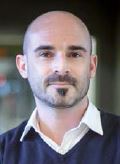 ©ICFO/Sylvia Gutiérrez |
Romain Quidant (ICFO): Quantum Optomechanics with a Levitating Nanoparticle |
| Reinhard Kienberger (MPQ): Attosecond Electron Dynamics in Molecular Systems Time-domain investigations of ultrafast microscopic processes are most successfully carried out by pump/ probe experiments. Direct access to electron motion on the atomic scale has been made possible by intense waveform-controlled few-cycle near-infrared laser pulses combined with isolated sub-femtosecond XUV (extreme UV) pulses. These tools, along with the techniques of laserfield- controlled XUV photoemission (‘attosecond streaking’), and ultrafast UV-pump/XUV-probe spectroscopy, have permitted real-time observation of electronic motion in experiments performed on atoms in the gas phase and of electronic transport processes in solids. With his Consolidator Grant, Reinhard Kienberger is planning to apply attosecond spectroscopy to electronic processes in molecules. By combining attosecond tools and techniques with their experience in UHV technology and target preparation in a new beamline, his team aims at investigating charge migration and transport in supramolecular assemblies, ultrafast electron dynamics in photocatalysis, and dynamics of electron correlation in high-TC superconductors. |
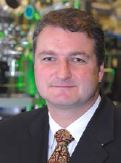 |
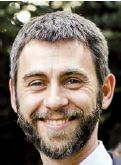 |
Dario Polli (CUSBO): Very Fast Imaging by Broadband Coherent Raman |
| Peter Baum (MPQ): Direct Visualisation of Light-Driven Atomic-Scale Carrier Dynamics in Space and Time The regime of lightwave electronics, where atomic-scale charges are controlled by few-cycle laser fields, holds promise to advance information processing technology from today’s microwave frequencies to the thousand times faster regime of optical light fields. All materials, including dielectrics, semiconductors and molecular crystals, react to such field oscillations with an intricate interplay between atomic-scale charge displacements (polarizations) and collective carrier motion on the nanometer scale (currents). This entanglement provides a rich set of potential mechanisms for switching and control. In order to be able to exploit these potential mechanisms, Peter Baum’s Consolidator Grant project aims at measuring electronic motion within and around atoms. Drawing on their expertise covering electron diffraction and few-cycle laser optics, his team will replace the photon pulses of conventional attosecond spectroscopy with freely propagating single-electron pulses, compressed in time by sculptured laser fields. They will use stroboscopic diffraction/microscopy to provide a direct visualisation of fundamental electronic activity in space and time. |
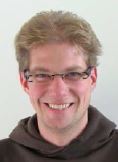 |
2013
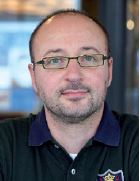 ©Riechelle van der Valk/StudioVU |
Davide Iannuzzi: Micromachined optomechanical devices (DIDYMUS) |
| Antonio Acín: Quantum information theory with black boxes (QITBOX) Looking for ways to exploit the extraordinary potential of quantum information, scientists are currently developing all kinds of different quantum systems. In his Consolidator Grant project, Antonio Acín, ICREA Professor at ICFO, will try to develop a theoretical framework that should allow him to understand what can and what cannot be done with these quantum systems in terms of information processing. In this framework, the quantum systems are seen as ‘black boxes’ – their only relevant properties are the input they receive and the output they produce. Acín will first characterise the correlations that are possible among quantum devices. These correlations will subsequently be used to construct relevant information protocols, which will finally be applied to concrete physical setups – such as quantum-optical systems. The idea is that, based on the identified correlations, new methods can be developed to study many-body systems. |
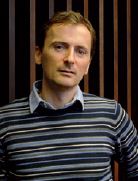 © ICFO |
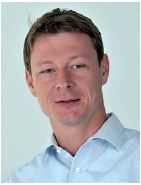 |
Jens Limpert: Advanced Coherent Ultrafast Laser Pulse Stacking (ACOPS) In the future, cheap and compact particle accelerators for collider experiments and cancer treatment might be based on laser technology. In laser wake-field particle accelerators, ultra-short and high-power laser pulses are used to create electron waves in a plasma, producing electric forces by which electrons or protons are accelerated to almost the speed of light. Such laser accelerators, however, require laser systems that combine high peak power laser pulses with a large number of pulses per unit time – a high repetition rate. In his Consolidator Grant project, Jens Limpert, Junior Professor at the Friedrich Schiller University in Jena, is planning to apply a technique called coherent pulse stacking in order to create a laser system that produces laser pulses with an energy of 32 J at a repetition rate as high as 15 kHz – numbers that are far beyond the state of the art. To this aim, he will try not only to coherently combine laser pulses from several fiber amplifiers, but he also plans to temporally store laser pulses inside optical cavities – waiting to be released as a coherent pulse train when a sufficient number of laser pulses have been built up inside. |

